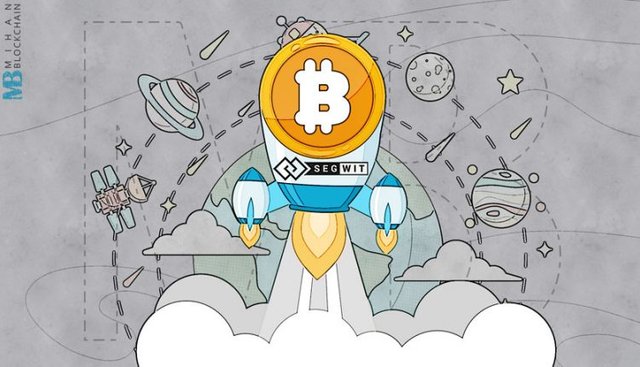What is SegWit on the Bitcoin Network and what is it?

SegWit is a process that eliminates the block size in the China block by deleting signature information from bitcoin transactions. When certain parts of the transaction are removed, the empty capacity adds more transactions to the chain.
The word segregate means separation and separation, and witnesses are witnesses, the same signatures of transactions. So Segregated Witness or its short SegWit means separating transaction signatures. The concept of Sagewith was created and introduced by developer Bitcoin, Peter Weil.
The Bitcoin Block of China consists of thousands of distributed systems across a peer-to-peer network. Each of these systems is called nodes (ninety). These nodes manage Bitcoin transactions. All transactions generated in bitcoin are copied to these nodes. This feature makes it almost impossible to hack or break transactions.
Transaction information shared across nodes consists of two parts: input and output. There may be multiple inputs and outputs in a transaction. The output, the public address of the receiver and the input, are the transmitter's general addresses. The sender needs a public address on behalf of the other party to send the money and money. Most of the transaction space consists of a signature, which is part of the input, and confirms that the sender has the money needed to pay. So Bitcoin moves from one input to another in each transaction. After each node authenticates the transaction, the transaction enters the block and the new block will store the chain continuation on all systems.
The problem with the bitcoin platform is that, with increasing transactions, more blocks should be added to the chains (china). Blocks are generated every 10 minutes and their maximum size is 1 MB. Due to this limitation, only a certain number of transactions can be added to the block. Increasing the volume of the blocks also slows the network, resulting in delays in processing and verifying transactions, and in some cases, it takes hours for the transaction to be verified. Imagine that all of the bitcoin transactions since its establishment in 2009 were on the block of China and are being added. In the long run, if a dramatic change is not achieved, such as this one and other technologies, this system will not last.
Dr. Peter Weil suggests that digital signature should be separated from transaction data to solve this problem. This is called SegWit. Digital signatures account for 65% of the transaction space. Segoutt is trying to ignore the information attached to the signature by separating the sign from the input and directing it to the end of the transaction. This action will increase the size of each block from one megabyte to about 4 megabytes. In addition to increasing the capacity of each block, Sogut also solves the problem in which the receiver may interfere with the sender's transaction ID. The digital signature is separated from the input, and the transaction disturbing side has no way to change the transaction ID without canceling the digital signature.
But ultimately, everyone has to agree to accept the Sagewit, the Lightning Network, the Fork and any other thing on the Bitcoin network. If the thoughts of all nodes and miners do not overlap with one thing, it will not happen on the network. This is also one of the decentralization features of a system. In a centralized situation, one person or a small team should usually decide on a topic. But in decentralized mode, in fact, this decision should be taken by several thousand or more. For both Bitcoin and other digital currencies, the speed of updates and changes is slightly slower than usual.
RESTEEM UPVOTE FOLLOW (WINK)
سلام
ممنون از پستت
یه ذره درکش سخته اگر صادقانه بگم
جسارتا
چاكرتم، فارسيشو برات ميفرستم داداش
اصل موضوعو گرفتم. کلا عرض کردم
ok.radife dadash